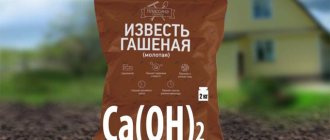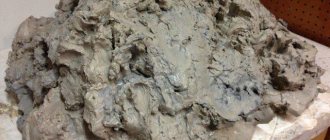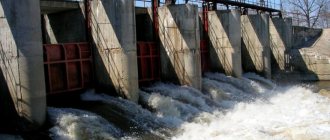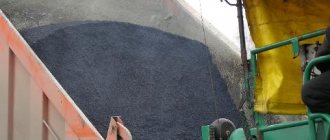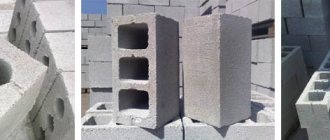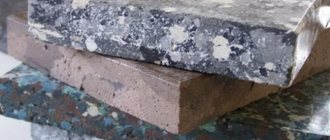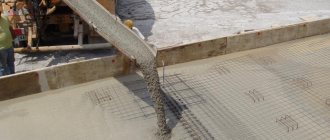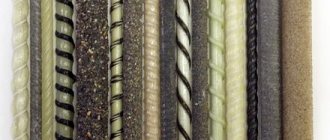Varieties
What mixtures contain quicklime? The formula and use of this substance are interdependent.
Lime used as a building material is divided into 2 types: hydraulic and air.
Air lime allows concrete to harden under normal conditions. Hydraulic substance can perform binding properties even in an aquatic environment, so this material is often used for the construction of bridge supports.
Processing features divide the material into several subtypes:
- Lump lime is produced in the form of a mixture of lumps of varying sizes. The substance often consists of calcium oxides. Most of it contains magnesium. The material may also contain aluminates, silicates, or ferrites, which are formed during the firing process. This substance is not a binder.
- Ground lime is produced by the lump grinding method, so the composition of these two varieties is the same. This substance is used in quicklime form so that the hardening process can be accelerated and waste generation can be avoided. Calcium chloride is added to improve hardening. If it is necessary to slow down this process, sulfuric acid or gypsum is added to the lime composition. Transportation of material is carried out in containers made of metal and paper. This material can be stored for about 10-15 days.
- Hydrated lime is formed during the slaking process. The composition of such material includes magnesium and calcium hydroxides, carbonate and other components.
- Lime paste is formed by adding enough water to cause the oxides to become hydrates.
Quicklime and slaked substances are the most popular today.
Slaked lime
The differences between slaked and quicklime, how are they expressed? The name itself already shows what the difference between the materials is. If the usual raw material has the formula CaO, then the slaked material is obtained by adding water: CaO + H2O = Ca(OH)2. This is the process of extinction. It is noteworthy that when the raw material is mixed with water, a violent reaction occurs, which releases a huge amount of heat and smoke. The water is literally boiling. That is why lump lime is called “boiling lime”. The output is hydrated fluff.
From the lump “boiler” you can get different subtypes: ground quicklime, hydrated fluff, limestone dough or milk. Depending on the amount of water added for slaking, dough or milk is obtained. For example, to produce limestone dough, the reaction liquid requires 3–4 times more than the material itself. And if you need to get limestone milk, then the amount of liquid increases 8–10 times.
Production
Pure quicklime is rarely found today, despite the long history of use of this substance in many sectors of life.
The production of such building material involves a specific chemical process.
Lime is produced by several methods:
- Thermal decomposition of rock is considered a traditional and quite expensive method, the use of which requires special equipment. Its main disadvantage is the release of a small amount of carbon dioxide.
- Processing of calcium salts, which contain various acids. This is an alternative technique that is becoming increasingly popular today. The firing process does not consume much oxygen, so the substance is environmentally friendly.
Special equipment is used for heat treatment of raw materials. Developed modern technological devices make it possible to use less expensive and harmful methods for extracting quicklime.
Let's look at several types of modern stoves:
- The most popular is the so-called shaft stove, which consumes gas. Thanks to this device, good quality lime is produced at an affordable cost.
- Installations operating on the pour-over principle are much less common. Coal is used for heating. This is considered the most economical and productive method, the main disadvantage of which is the large amount of emissions into the environment.
- The rotary kiln makes it possible to produce high-quality lime, but the production cost is relatively high.
- The design of the stove with a removable firebox allows you to obtain pure lime with a minimum amount of all kinds of impurities. The stove can run on solid fuel, and its performance is quite comparable to its analogues.
- Ring and floor units are practically not used because their productivity is very low. Old products are still in use, but modern equipment is gradually pushing them out of the market.
The technical characteristics of the substance are determined by the established state quality standard. The manufactured product belongs to category 2 of chemical hazard.
Application in construction
The main area in which slaked and quicklime is used is construction. Lime is an excellent binding material. One of its advantages is environmental friendliness and naturalness. It is completely harmless to humans. We have already spoken a little about the use of quicklime raw materials, but these are not all aspects. It is necessary for the production of dry construction mixture, mortar and plaster composition. In addition, by adding lime to concrete products, they become much stronger, more moisture-resistant and denser.
But how is slaked lime used? It is from it that concrete and various masonry and plaster mortars are made. It serves as a binder. Lime mortar is famous for its adhesive properties. It adheres perfectly to brick, concrete and wood surfaces.
Advice! For a wooden surface, it is necessary to make shingles or install a construction mesh.
Application
As mentioned above, a material such as quicklime is used in a wide variety of fields of activity. The formula and the production of this substance in large quantities make it accessible and practical to use. The largest consumers of such material include:
- Metallurgy industry.
- Sugar production.
- Agriculture.
- Chemical industry.
CaO is naturally used even in the construction industry. In the field of ecology, such a chemical compound is of serious importance. The substance is used to clean flue gases from the sulfur and oxide they contain. This compound promotes the precipitation of organic substances in water and its subsequent softening.
The use of quicklime helps neutralize components in wastewater. If lime comes into contact with the soil, the acidity level decreases and the conditions for growing crops improve. Quicklime helps increase calcium levels in the soil. Thus, tillage of the soil is greatly facilitated and the process of humus decay is significantly accelerated.
How to slak lime - on video:
Noticed a mistake? Select it and press Ctrl+Enter
to let us know.
It is a white powder, poorly soluble in water, a strong base, reacts with acids (neutralization reaction) to form the corresponding calcium salts.
Density 2.211 g/cm³. Melting point 512° C. Chemical formula: Ca(OH) 2
It is obtained by reacting calcium oxide (quicklime) with water, a process called “slaking lime.” When slaking lime, a significant amount of heat is released, amounting to 65 kJ per 1 mole, or 1160 kJ per 1 kg of calcium oxide. In this case, the temperature of the slaking lime can reach values at which not only water can boil, but also wood can ignite.
Classification of lime. Construction lime, depending on the hardening conditions, is divided into air lime, which ensures the hardening of mortars and concretes and their preservation of strength in air-dry conditions, and hydraulic lime, which ensures the hardening of mortars and concretes and their preservation of strength both in air and in water. Airy quicklime, depending on the content of calcium and magnesium oxides in it, is divided into calcium, magnesium and dolomite. Air lime is divided into quicklime and hydrate (slaked), obtained by slaking calcium, magnesium and dolomite lime. Hydraulic lime is divided into weakly hydraulic and strongly hydraulic. Based on its fractional composition, lime is divided into lump lime, including crushed lime, and powdered lime. Powdered lime, obtained by grinding or slaking (hydration) of lump lime, is divided into lime without additives and with additives. Based on the slaking time, construction quicklime is divided into fast slaking - no more than 8 minutes, medium slaking - no more than 25 minutes, slow slaking - more than 25 minutes.
Application of slaked lime. When whitewashing premises; When whitewashing wooden fences and coating rafters - to protect against rotting and fire; For preparing lime mortar. Lime has been used for masonry since ancient times; For the preparation of silicate concrete; To eliminate carbonate hardness of water (water softening); For the production of bleach; For the production of lime fertilizers; Causticization of sodium and potassium carbonate; Leather tanning; Obtaining other calcium compounds, neutralizing acidic solutions (including industrial wastewater), obtaining organic acids, etc.; In the food industry, it is registered as a food additive E526; Lime water is a clear solution of calcium hydroxide. It is used to detect carbon dioxide; Lime milk is a suspension (suspension) of calcium hydroxide in water, white and opaque. It is used for the production of sugar and the preparation of mixtures to combat plant diseases, whitewashing trunks; In dentistry - for disinfection of root canals of teeth.
Physico-chemical indicators of slaked lime GOST 9179-77: Note: 1. CO 2 in lime with additives is determined by the gas-volume method. 2. The moisture content of hydrated lime should not be more than 5%.
Packaging, transportation and storage. Lump lime is shipped in bulk, powdered lime is shipped in bulk or in paper bags. Four-layer paper bags can be used. Lime is transported by covered transport of all types in accordance with the rules of cargo transportation in force for this type of transport. It is permitted, with the consent of the consumer, to supply lump lime in all-metal gondola cars and open vehicles, provided that its quality is maintained and the necessary measures are taken against spraying and exposure to precipitation. During transportation and storage, lime must be protected from moisture and contamination by foreign impurities. Lime should be stored and transported separately by type and grade. The guaranteed shelf life of the product is 30 days from the date of its shipment to the consumer.
Fluff lime (slaked lime) is a material that has been known to mankind for a very long time. Due to its unique properties, it is readily used by agricultural complexes in fields and gardens, as well as simply by gardeners and gardeners in their personal plots and summer cottages. But over time, with the identification of more and more useful qualities, the scope of application has expanded significantly and now the use of slaked lime is very wide, even in dentistry, which many are surprised to learn about. Slaked lime fluff is available to everyone. You can buy it ready-made, but you can also make it yourself, at home.
Fluff lime, also known as hydrated lime, has a very simple composition, which includes calcium oxides.
And to obtain it, a not very complicated technological process is required, which consists of simply adding water, followed by thorough mixing.
The formula of slaked lime, as understood by chemists, is expressed as follows: CaO+H 2 0 = Ca(OH) 2. . But in real form, this mixture may also contain elements such as magnesium, calcium derivatives, quartz sand, to enhance the properties necessary for specific types of its use. It should be remembered that when slaked (filled with water), fluff lime is obtained with different properties, which are influenced by the interaction time of the original ingredients. Up to 8 minutes of stirring - we get a fast-extinguishing one, 25 minutes give a medium-extinguishing one, and more than 30 minutes - a slow-extinguishing one.
Hydrated lime is produced in two states - in the form of dough and fine white powder. At the same time, an interesting fact was noted - if slaked lime into the dough is stored in a pit for a long time, then its properties only improve over time.
A simple and affordable material – hydrated lime – is used very widely:
- when whitewashing trees, to protect against pests;
- whitewashing of interior premises for disinfection purposes;
- painting wooden structures in buildings and structures, from rotting and possible fire;
- in the production of the well-known “bleach”;
- in construction and repair work, as an excellent binding material;
- in the production of silicate concrete;
- when it is necessary to soften water for domestic purposes;
- in the production of fertilizers (lime fertilizers);
- for causticization of potassium and sodium carbonate (caustic soda);
- in the technological process of leather tanning;
- in compounds with calcium to neutralize acidity;
- in the food industry - additive E526;
- for detecting carbon dioxide using lime water;
- in the manufacture of sugar using lime milk;
- in dentistry, when disinfection of dental canals is necessary.
Production of raw materials
We already know that lime is a product of rock. It is mined by firing in special kilns made of limestone, dolomite and chalk. The output is material in the form of white lumps, or as it is also called - lump “boil”. This is quicklime. The extraction process takes place in special factories, from where the lime is transported further. “Kipelka” is the initial product from which other types will be produced. The chemical formula of the material is CaO (calcium oxide).
The raw material, ready after firing, is not used for mortars and cement, as it has the ability to absorb moisture very strongly, and also contributes to the formation of fungal mold on the walls. Nevertheless, boiling water is quite in demand in the construction industry, namely for the production of slag concrete, sand-lime brick, paints and mixtures for plaster.
Depending on the time it takes to extinguish the lump “boil”, it is divided into 3 types. The first of them is quick-slaking lime. The time required to repay it is up to 8 minutes. The second type is medium-extinguishing, which reaches in 25 minutes. Well, the last type is slow-extinguishing, which needs 25 minutes or more to reach condition. So we smoothly moved on to another type of material - slaked lime.
Tips for maintenance and storage
The cost of finished fluff is not that high, and it is always on sale. But, nevertheless, if there are stocks left, or the process of using it has been somewhat delayed, following simple rules, you can always have access to this material.
- when the density changes due to moisture evaporation, simply add water;
- during use, it is necessary to constantly stir the solution;
- It is necessary to add water exactly until it is absorbed;
- for storage in a container, sand is poured on top (about 20 cm);
- when using large volumes in winter and located on open ground to prevent freezing, cover with sand and insulate the top with ordinary soil;
- Do not use when working with large grains, lumps, under-extinguished or burnt particles, because this will lead to disruption of the integrity of the treated surface;
- before use in mortars for laying bricks and blocks, curing for up to 14 days is required;
- for plastering work – 30 days.
The process of whitewashing with lime is very simple. It is recommended to dilute the solution first, to obtain a rich white color, it is better to use premium or first grade lime, dilute the composition, adhering to a 1:1 ratio. Before whitewashing, the solution is thoroughly mixed and tree trunks or wooden supports are painted.
Limestone calcination is the process of heating a limestone mass during which calcium carbonate (formula: CaCO3) is decomposed into calcium oxide (CaO) and carbon dioxide. The basic reaction equation looks like this: CaCO3=CaO+CO2. This reaction is used to produce quicklime, cement, binders, and soda ash. Special industrial furnaces are used for firing. In factory conditions, the temperature at which firing is carried out ranges from 1000 to 1300 degrees Celsius. Calcium oxide is the main component of quicklime.
In case of incomplete calcination, pieces of unburned material remain in the furnace. However, their presence does not affect the quality of the product formed. A more harmful effect is caused by an increase in temperature above the maximum permissible values. In this case, the so-called burning of the feedstock is observed, which results in the appearance of coarse-crystalline calcium oxide. Such lime is not suitable for slaking, since in this case the process is very slow, as a result of which it continues even after the lime has been used for its intended purpose. This can cause defects in the structure, even to its accidental destruction.
Impurities present in limestone affect the firing process and the properties of the resulting product, often leading to a decrease in the efficiency of the process.
How to produce slaked fluff
To produce slaked lime, you need to follow some rules. Dehydration (quenching process) must be carried out in the open air. The raw materials themselves must be placed in a tank or container. Since quite a large amount of steam will be released during the process, you need to protect yourself. The material itself can also cause harm to humans and even burn the skin. That is why it is necessary to protect the skin of the hands and the entire body, eyes and respiratory tract. You cannot do without a suit or special clothing, gloves, goggles and a respirator. Then everything will be safe for your health.
It is important to remember that there is no need to rush in this matter. The qualities of quicklime can vary, some slak quickly, others take a long time. If you do not complete the whole thing, it is possible that the material will smoke in the finished plaster. When you use slow-slaking lime, it is not recommended to immediately fill it with water. It's better to do this in small portions. Medium and fast-extinguishing are poured until the steam completely disappears to prevent burnout.
Note! Freshly slaked lime may have residues of the original material. They are extinguished again and then removed.
After dehydration, the amount of lime will be greater. From 1 kg of quicklime you can get 2 or more. There is a clear difference between slaked lime and quicklime. But where are these materials used?
What is lime
Quicklime (mainly CaO) is a powdery substance, either ground or doughy, without a characteristic color, which is used to produce slaked lime (Ca(OH)2). Quicklime reacts violently with water. The slaked lime formed during this process is used in construction as a binding material.
Quicklime can be presented in several versions: air, hardening and hydraulic. The latter can harden even while in the water column. Air lime is a product of calcination of limestone with a low clay content (no more than 8 percent). Shaft and rotary kilns are used for its production. The aerated lime slaking product has higher ductility, while the hydraulic lime slaking product has increased strength with lower ductility.
Lime is used for the preparation of mortars, in the chemical industry, agriculture, metallurgy, and in the production of certain types of bricks.
First aid
- In case of contact with skin : wash immediately with soap and water;
- In case of contact with eyes : immediately rinse eyes with eyelids open for at least 15 minutes under running water. Contact an ophthalmologist!
- After inhalation : Immediately remove person to fresh air. Contact your doctor.
- After swallowing : immediately drink lemon juice, vinegar or raw eggs beaten in milk, then drink plenty of water, avoiding vomiting (risk of perforation). Contact your doctor.
Buy calcium oxide (quicklime)
Preparation of raw materials for firing
The production of quicklime includes 3 main stages: the extraction of raw materials (limestone) and its processing, the delivery of fuel for burning and the limestone burning process.
Extraction of limestone rock is carried out by open-pit mining - in quarries. For its initial crushing, a special technique is used. Layers of high-density limestone with a high magnesium content are pre-blasted. If there are different types of limestone in the deposit, their selective development is preferable.
The optimal option for firing is the same size of rock pieces in the mass of extracted limestone. If it is different, there will be unevenness in the degree of firing. Thus, the cores of the largest pieces of rock may remain solid, while small particles may be burned. The presence of different fractions in the furnace at the same time impairs gas removal, which complicates its operation. In this regard, before placing in the oven, all pieces are sorted by size, and the largest ones are crushed.
The need for crushing also arises in the case of too large fraction sizes, which can be many times larger than those required with the existing firing technology. The range of pieces sizes suitable for firing is 4 – 12 cm in diameter. Rock crushing is carried out at a crushing and screening plant.
Raw materials for firing should not contain large amounts of clay and sand impurities, which can reduce the quality of the finished product.
Chemical properties[ | ]
Calcium oxide is a basic oxide. Reacts vigorously with water, releasing heat and forming calcium hydroxide, a saturated solution of which is a strong base:
C a O + H 2 O → C a ( OH ) 2 {\displaystyle {\mathsf {CaO+H_{2}O\rightarrow Ca(OH)_{2}}}} + 63.7 /mol.
At temperatures above 580 °C [ source not specified 854 days
] this reaction is reversible.
How a basic oxide reacts with acidic oxides and acids to form salts:
C a O + SO 2 → C a SO 3 {\displaystyle {\mathsf {CaO+SO_{2}\rightarrow CaSO_{3}}}} C a O + 2 HC l → C a C l 2 + H 2 O {\displaystyle {\mathsf {CaO+2HCl\rightarrow CaCl_{2}+H_{2}O}}}
When heated with carbon in a high temperature furnace or electric arc, it forms calcium carbide (used to make acetylene):
C a O + 3 C → C a C 2 + CO {\displaystyle {\mathsf {CaO+3C\rightarrow CaC_{2}+CO}}}
Despite the mass industrial production of acetylene by more efficient methods, this reaction remains of little practical importance, since calcium carbide is a convenient source of acetylene in laboratory practice and in welding apparatus.
Operation of limestone kilns
The main purpose of roasting is to obtain the most complete decomposition of calcium and magnesium carbonate into carbon dioxide and oxides of these substances. In this case, the resulting product must have good porosity, hygroscopicity, and a uniform internal structure.
Ideally, 1,790 kJ of thermal energy should be consumed to decompose 1 kg of calcium carbonate, and 3,190 kilojoules of energy to produce 1 kg of calcium oxide (the main component of quicklime).
For firing, pieces of ordinary limestone or marble are used. This procedure becomes possible in so-called shaft furnaces. They are a metal hollow cylinder, with a metal wall thickness of approx. 1 cm. The cylinder is installed on a solid concrete base. The operation of such furnaces is characterized as continuous, and their maintenance does not create great difficulties.
Coal is most often used as fuel in such devices. The furnace consists of a shaft, a mechanism for loading and unloading raw materials and filters for removing firing by-products. Air is pumped under pressure into the lower sector of the furnace.
The most intense coal combustion occurs in the middle part of the mine. Passing through it, limestone (or marble) turns into lime. Below, under the influence of the air flow forced from below, it cools, while the air, on the contrary, heats up, entering the combustion zone in this state. It is this air that serves as a source of oxygen for fuel combustion. Heating up in the combustion zone, it rushes to the upper part of the shaft, where it also performs an important function: it warms up and dries the incoming fresh raw materials.
All this ensures more or less autonomous operation of the shaft furnace, which is quite inexpensive. The construction of the furnace itself is also not considered a highly expensive undertaking. The prevailing height of the structure is 20 m.
The fuel is supplied to the furnace in the form of bulk layers, between which there are layers of limestone raw materials. In other designs, so-called remote fireboxes are used, which are located on the sides along the perimeter of the shaft. In this case, the fuel can be gas, firewood, peat, or shale.
Limestone burning technology
To supply the prepared raw materials to the firing furnace, trolleys moving along a rope device are used. Solid fuel is added to each of them. To fill this mass into the shaft, a special loading mechanism is used. The lime obtained during firing is unloaded using an unloading mechanism, after which it is transported to a bunker. A pump fan is used to supply air to the oven. The gas generated during combustion enters the flue, which may have a zigzag shape and devices for removing dust. From the collector, the gas is directed to the gas purifier. Cooling and partial dust removal take place there. From there it goes to an electric cleaner, which performs more thorough cleaning of dust and moisture. After which the purified gas is sent to compressors and columns.
Rotary kilns are used for firing soft varieties of limestone and chalk. They make it possible to obtain high-quality lime even from shell rock, provided that the size of the pieces of the original raw material is small. The advantage of such devices is their high firing speed and ease of control. The productivity of rotating structures is significantly higher than that of shaft furnaces, and reaches 400 - 500 tons per day. Another advantage of the operation of such devices is the low risk of burning the lime mixture, fewer impurities and unburned pieces.
Security[ | ]
Calcium oxide is a highly hazardous substance. (Hazard class 2). It is a caustic substance and is especially dangerous when mixed with water.
In the form of dust or droplets of suspension, they irritate the mucous membranes, causing sneezing and coughing.
The action of CaO, similar to the action of alkali, is the saponification of fats, the absorption of moisture from the skin, the dissolution of proteins, irritation and cauterization of tissues.
Strongly affects the mucous membranes of the eyes. Superficial ulcerations are observed on the mucous membranes of the mouth and nose; sometimes perforation of the nasal septum.
The deep airways are also affected.
Scope of application
Slaked lime is used in various branches of human activity.
This substance has become indispensable in many types of work, as well as in everyday life.
- In a garden or vegetable garden, hydrated lime is needed to lime the soil. This procedure significantly increases soil fertility. Thanks to liming, the acidity level of the soil is reduced and favorable conditions are created for growing various crops. Lime compounds also save many plants from pests and parasitic larvae.
- Since the substance is capable of imparting strength to various materials, it is often used to coat wooden structures (benches, fences, gazebos and even pegs in garden beds). Also, such a coating protects various structures from fire.
- In certain seasons, garden trees are whitewashed using slaked lime. They are coated with a special solution based on slaked lime, which saves plants from the effects of temperature changes.
- Calcium hydroxide is also used to prevent mold from forming on garden tools or in rooms such as the cellar.
In addition to gardening, fluff is actively used in many construction works and some other areas.
- Calcium hydroxide is used in brickwork. It creates high adhesion to both brick surfaces and cinder block materials.
- In order to save money during construction work, a lime mortar known since ancient times is sometimes made by mixing slaked lime with sand.
- Based on calcium hydroxide, a composition such as bleach is produced. It is an excellent disinfectant.
- The substance is used to make a special type of concrete – silicate. It is characterized by faster hardening.
- This substance is used to whitewash not only street structures and trees, but also indoor walls and ceilings.
- Slaked lime is part of calcium-based compounds that help purify water.
- Fluff is used for tanning leather.
- Calcium hydroxide is used in dental procedures such as root canal cleaning.
- Slaked lime can even be added to food. The substance is used as part of the E526 additive.
Fluff is actively used in various industries:
- metallurgical;
- chemical;
- sugar;
- construction;
- pulp and paper.
Quicklime can be used in various fields of human activity. It is most widely used in construction and everyday life. The material is used as an additional component for the preparation of cement mortars. Its astringent properties impart the necessary plasticity to the mixture and also reduce the hardening time. Lime is used as an additional component in the production of sand-lime bricks.
Lime-based solutions are used for whitewashing various indoor surfaces. This method of treating ceiling and wall surfaces is still relevant today, since lime is a material that is very affordable, and the decorative effect it creates is no worse than that of expensive paints and varnishes.
In agriculture and horticulture, lime is also an important component. It is used to reduce acidity and enrich soil with calcium. The quicklime mixture applied to the soil helps retain nitrogen in the soil, while activating the work of beneficial microorganisms and stimulating the growth of the root system of plants.
Quicklime also has a negative effect on crop pests. To carry out preventive measures aimed at combating insects, lime is used as a solution with which plants are sprayed or the lower part of tree trunks is treated. For animals, lime is a source of calcium, so it is often given as a supplement.
In everyday life and medical institutions, bleach is used as an excellent disinfectant. A solution from it kills most known pathogenic microorganisms, suppressing their growth and further development. Quicklime also helps in neutralizing household gases and wastewater.
In the food industry, lime is known as emulsifier E-529. Its presence makes it possible to improve the mixing process for components whose structure does not allow them to combine correctly.

